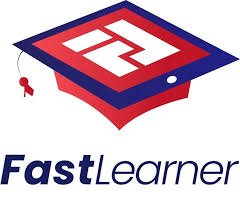Top 5 AI Graders for Schools and Universities in 2025

Introduction
In 2025, the education sector is increasingly adopting AI-powered grading tools — platforms designed to assess student essays, exams, and written responses automatically. These tools promise to reduce the heavy workload on educators while providing consistent feedback, detailed analytics, and faster turnaround. For schools and universities looking to scale assessment, streamline grading, and free up teacher time, selecting the right AI grader is key. This article reviews the top 5 AI graders for educational institutions in 2025, and also explains how efficient implementation (including robust coding using data structures in Java) underpins their performance.
What to look for in an AI Grader
Before diving into the top tools, it’s worth outlining what features institutions should evaluate:
- Rubric support & customisation: The ability to define or import grading criteria and have the AI apply them consistently.
- Support for multiple assignment types: Essays, short answers, scanned handwritten responses, code, diagrams, etc.
- Integration with LMS / submission workflows: Seamless submission, feedback return, and grade export
- Analytics & reporting: Insights into student performance, grading patterns, and class-wide trends.
- Fairness, transparency and teacher override: Teachers must retain control, be able to adjust or override AI grades.
- Scalability & efficiency: The system should process large numbers of submissions quickly, reliably, and without undue hardware burden.
- Strong technical architecture: This is where efficient software design — including the use of data structures in Java — becomes critical for performance, memory use, and throughput.
In fact, an important part of the technical backbone of many of these tools is built with Java, and relies heavily on optimized data structures (arrays, ArrayLists, HashMaps, Trees, Graphs) to handle text tokenization, feature extraction, rubric matching, scoring, and analytics.
The Top 5 AI Graders for 2025
Here are five standout tools, followed by a deeper dive into each.
1. Gradescope (by Turnitin)
Why it stands out: Gradescope is widely cited as one of the leading AI grading platforms for higher education, especially in STEM disciplines. It supports handwritten submissions, digital uploads, rubrics, and uses machine learning to group similar responses to speed up grading.
Key features:
- AI-assisted grouping: responses are clustered by similarity so teachers grade one sample and the system propagates the grade to similar ones.
- Support for bubble sheets, scanned exams, handwritten work.
- Integration with major LMS platforms like Canvas, Moodle, Blackboard.
- How efficient architecture helps:
- Under the hood, the system likely tokenizes student responses, converts handwritten scans via OCR, then organizes answers into clusters (via similarity metrics). Data structures such as HashMaps mapping answer-signature → cluster, ArrayLists for token lists, Trees for rubric feature hierarchies, and PriorityQueues for ranking clusters all play a role. Java is often used in enterprise backend systems for this kind of workload because of its scalability and mature ecosystem.
Ideal for: Universities with large enrolments, STEM departments with many structured responses.
2. Cognii
Why it stands out: Cognii is geared toward open‐response assessments (essays and written answers) and markets itself as reducing the grading burden while providing in-depth feedback and analytics for K–12 and higher education.
Key features:
- Conversational AI tutoring and assessment engine that supports students in constructing answers and immediately receiving feedback.
- Real-time analytics for instructors: see where students struggle or excel.
- Technical considerations:
- In open-response evaluation, text must be processed, tokenized, feature‐extracted, and fed into scoring models. Data structures in Java such as ArrayLists (for tokens), HashMaps (token → counts/features), Trees (for parse/syntax structure), and Graphs (for concept relationships) are essential for managing this processing at scale. For example, a parse tree may help analyse argument structure; a trie may help with keyword detection.
Ideal for: Schools/universities focusing on writing, humanities, or open‐response assessment rather than purely objective question types.
3. Graded Pro
Why it stands out: Graded Pro is marketed as “all-in-one” AI grading for schools, with the headline claim of saving up to 9 hours per class per week.
Key features:
- AI-driven feedback in seconds across multiple question types (essays, classwork, homework, exams).
- Teacher review and annotation tools, mobile app, Google Classroom integration.
- Technical architecture note:
- To process large volumes of student work with quick turnaround, the backend must efficiently manage text ingestion, rubric scoring, feedback generation, and result export. Java’s concurrency features (e.g., concurrent HashMaps, thread‐safe data processing) and efficient data structures allow for large-scale processing without performance bottlenecks. For instance: scanning submissions into a queue (LinkedList/ConcurrentLinkedQueue), mapping rubric items to scoring functions (HashMap<String, ScoringFunction>), storing student feedback profiles in structures like HashMap<StudentID, FeedbackList>.
Ideal for: K-12 schools or smaller universities seeking a broadly applicable AI grader across subjects.
4. CoGrader
Why it stands out: CoGrader emphasises essay and writing assignment grading with teacher-defined rubrics.
Key features:
- Imports assignments from Google Classroom, Canvas, Schoology.
- Teachers define their own criteria; AI applies them and returns both score and justification/feedback.
- Teachers maintain review & override control.
- Technical note:
- When grading essays, the system needs to evaluate dimensions like “thesis clarity,” “evidence support,” “writing mechanics,” etc. Each of these dimensions can be mapped to features extracted from the text (token counts, transition words, sentence length, cohesion metrics). In Java, you might design a class structure where each dimension is an object; rubric rules map to scoring functions. Data structures like ArrayLists (student responses), HashMaps (rubric dimension → weight), Trees (syntax trees) help organise and compute. Efficient memory usage and processing are key when handling hundreds of students’ lengthy submissions.
Ideal for: English, humanities, writing‐intensive courses at high‐school or university level.
5. Scribo Pronto (for Writing/Humanities)
Why it stands out: Scribo offers a Chrome extension for Google Docs focused on writing and humanities—making instant feedback, grading, and rubric support easy to access.
Key features:
- Teachers (and students) can use Google Docs add-in to analyse writing, insert feedback, apply rubrics.
- Supports student writing improvement as well as grading workflows.
- Technical architecture:
- Although perhaps lighter scale than full institutional systems, Scribo still requires parsing student text, evaluating features (grammar, structure, tone), generating feedback. Data structures in Java (or JavaScript for extension) could include HashMaps for feedback templates, tries for word/phrase detection, graphs for argument structure. The backend service likely uses Java servers to manage submissions, feedback generation, and interface with the extension.
Ideal for: English/humanities departments, schools that use Google Workspace and want a lightweight AI grading tool.
How “Data Structures in Java” Drive AI Grader Performance
It’s worth pausing to discuss how the use of data structures in Java makes the difference between a sluggish system and a scalable one:
- Tokenization & storage: Student responses are broken into tokens (words/sentences) stored in ArrayLists or arrays for iteration.
- Feature extraction: HashMaps map each token/feature to a count or metric (e.g., word frequency, transition word count, grammar error count).
- Rubric mapping: A HashMap or TreeMap may map rubric dimension (e.g., “organization”) to scoring function objects.
- Parse trees / syntax trees: Tree data structures represent sentence structure, clause relationships, which are important when assessing coherence or argument clarity.
- Graph structures: For advanced semantic analysis, concepts within an essay can be nodes in a graph, edges showing relationships; evaluating coherence becomes graph traversal.
- Priority queues: When ranking student submissions by difficulty or flagging which need teacher review, priority queues help manage workflow.
- Concurrency & large-scale processing: Java’s concurrent data structures (ConcurrentHashMap, ConcurrentLinkedQueue) allow safe multi-threaded grading pipelines.
- Memory management & scalability: Good choice of data structures avoids large memory overhead, ensures performance even when thousands of submissions are processed.
In short: selecting the right data structures in Java is not just academic — it’s a practical requirement for an AI grading system that can serve large classes, heavy workloads, and produce results quickly and reliably.
Choosing the Right Tool for Your Institution
When deciding which of the above tools is best for your school or university, consider:
- Assessment types: Are your assessments mostly essays/open-response or structured (STEM, multiple-choice)? Gradescope excels in STEM structured work, while CoGrader/Scribo excel in writing.
- Integration needs: Does the tool integrate with your LMS (Canvas, Google Classroom, etc.)?
- Teacher workflow: How much teacher override is needed? Do you want full automation or guidance + review?
- Scale & cost: Larger universities may need robust GradeScope-type systems; smaller schools may benefit from lighter tools like Scribo.
- Technical capacity: Does your IT infrastructure support the integration, data flow, and security required (processing large amounts of student data, ensuring privacy)?
- Training & change management: Teachers need training to trust and use AI grades. Ensure the vendor supports training, transparency, and dashboard analytics.
- Ethics & fairness: Ensure the tool supports transparency (how it scores) and that teachers retain final say over grades. AI isn’t a replacement for human judgement.
Conclusion
In 2025, AI grading tools are no longer niche—they’re becoming core parts of the assessment infrastructure in schools and universities. The top 5 tools reviewed here—Gradescope, Cognii, Graded Pro, CoGrader, and Scribo Pronto—offer different feature sets suited to different institutional needs.
However, regardless of the platform you choose, the technical architecture behind it matters. Efficient use of data structures in Java ensures that the system can ingest, process, and score large volumes of student work quickly and reliably, while providing meaningful feedback and analytics.
For any institution looking to reduce teacher workload, provide faster feedback, and scale assessment effectively, choosing a tool with both strong pedagogy and solid engineering is key. With the right system in place, educators can reclaim hours each week, focus more on instruction and student growth, and rely on AI to handle the repetitive—but essential—task of grading.
Comments
You must be logged in to comment.
Latest Articals
-

How to Apply for Student Visa Successfully
Expert Guidance for Your Study Abroad Dream by Ridge OverseasStudying abroad is one of the most exciting journeys in a student’s life. It brings global exposure, a world-class education system, and opportunities for a bright career. But before you step into a new country, getting a student visa is the most important requirement.Many students struggle or feel overwhelmed because they don’t know how to apply for student visa successfully — which documents to submit, how to prove financial stability, how to crack the interview, and what mistakes to avoid.This is where Ridge Overseas comes in as a trusted student visa consulting partner. With expert assistance and years of experience, Ridge Overseas ensures your application is accurate, complete, and approved in a timely manner.✅ Step-by-Step Guide: How to Apply for Student VisaLet’s break the process into simple and achievable steps:1️⃣ Choose the Right Country and CourseYour study abroad decision should match:✔...
-
The Keychain iPhone Charger You’ll Actually Use — Not Just Carry
The End of “Low Battery” Panic We’ve all been there standing in a checkout line, traveling, or waiting for a ride, when that dreaded “1% battery” alert flashes. You pat your pockets, rummage through your bag, and realize your cable and power bank are both at home. In moments like these, a keychain iPhone charger feels like the superhero gadget you wish you’d always carried. And unlike many accessories that end up buried at the bottom of a drawer, this tiny lifesaver is one you’ll actually use not just keep for show. Let’s explore why this pocket-sized tool is becoming an everyday essential for modern life. 1. Why the Keychain iPhone Charger Is Changing Everyday Carry The keychain iPhone charger is more than a cute tech trinket it’s a practical, powerful backup that blends into your daily routine. For years, portable chargers meant carrying bulky power banks or tangled cables. But the keychain version reimagines convenience....
-

Improve Cutting Accuracy with Shear Controls
Smart Technology for Maximum Precision by DSC AutomationIn today’s competitive manufacturing environment, accuracy and consistency are everything. When sheet metal cutting goes wrong — even by a few millimeters — it can result in material loss, production delays, and increased costs. This is why modern industries depend on innovative automation systems like Shear Controls to maintain high standards of precision and productivity.DSC Automation, a trusted leader in industrial automation solutions, provides highly reliable and accurate shear controls designed specifically for metal fabrication sectors. With decades of technical expertise, DSC Automation ensures that every cut made on a shear machine supports production excellence.Why Precision Matters in Sheet Metal CuttingIndustrial shearing involves powerful machinery cutting thick metal sheets into required shapes and dimensions. Slight deviations in measurement may lead to:❌ Rejected parts ❌ Rework and increased labor hours ❌ Wastage of expensive metals ❌ Inaccurate assembly in next production stagesTo avoid such...
-
.png)
The Ultimate Guide to Using a Grading Calculator for Academic Success
Tracking academic performance has never been easier, thanks to modern digital tools. Whether you're a student monitoring your progress or an educator simplifying assessments, learning how to use a grading calculator effectively can greatly improve your educational experience.What Makes an Effective Grade Calculator?A good grade calculator is more than just a number cruncher—it’s an academic companion that delivers instant insights into your performance. These tools have changed how students and teachers manage grades, offering speed and accuracy that manual calculations can’t match.For example, students often search “18/20 grade” to find their percentage—90%, which equals an A grade. This quick conversion shows why grading calculators have become essential in education today.The Evolution of Digital Grading ToolsTraditional grading required manual calculations on paper, which were time-consuming and prone to errors. Today’s online grade calculators eliminate those challenges by offering:Instant Accuracy: Guaranteed error-free results every time.Time Efficiency: Immediate outcomes without manual math.Accessibility: Available...
-

Stress Less, Celebrate More – Wedding Planners in Amritsar
Bringing Dream Punjabi Weddings to Life with Divine WeddingsPunjabi weddings are known around the world for their excitement, colors, traditions, music, and of course, the love shared between families. From the very first function to the grand finale — the Anand Karaj or the lavish reception — every ceremony deserves to be perfect. But planning such a big celebration is not an easy task.There are endless questions…✔ Which venue is available? ✔ Who will handle décor and entertainment? ✔ How do we manage guests? ✔ How to take care of rituals and timelines? ✔ What about food and photography?This is where Divine Weddings, one of the leading Wedding Planners in Amritsar, steps in — to turn your stress into joy and your dreams into reality.💍 Why Hire Wedding Planners in Amritsar?Weddings in Amritsar are full of culture, joy, and celebrations that stretch over several days. Handling everything alone can become...
-

Best Restaurants in Providence for Halal Cuisine
Looking for restaurants near me in Providence? Experience bold spices, aromatic herbs, and fresh halal-certified meals that bring together Indian and Mediterranean flavors. Highly rated by locals, this family-friendly restaurant offers dine-in, takeout, and delivery, ensuring everyone can enjoy authentic dishes at their convenience.✅ Authentic Indian-Mediterranean flavors✅ Dine-in, takeout, and delivery✅ Highly rated by locals👉 Visit: Best Restaurants in ProvidenceAddress: 269 Valley St, Providence, RI 02909, United StatesPhone: +1 401-270-2155Hours: Opens 11 amDelivery: 10 am–12 am